Seems like someone recently asked about using Douglas fir for flooring, but I cannot find the thread. Anyone recall it, or can answer this?–
My brother is thinking about using regular Douglas fir 2×8’s for flooring, may mill tongue and groove into them. I told him I thought the milling would be either a PITA for him to do, or expensive for a mill to do, plus Doug fir is too soft for flooring. Any thoughts?
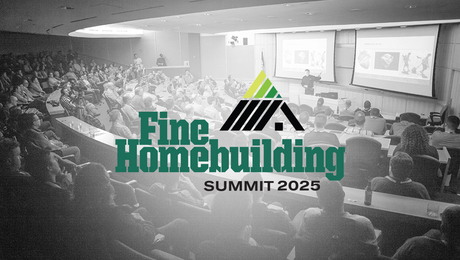

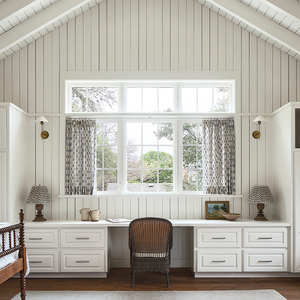
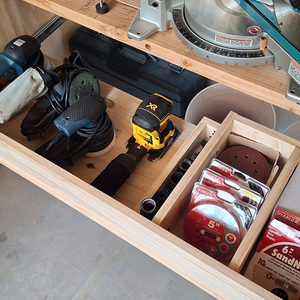
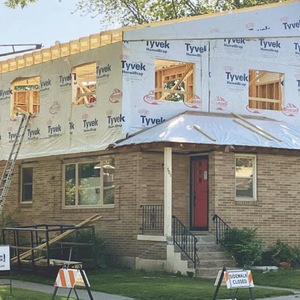
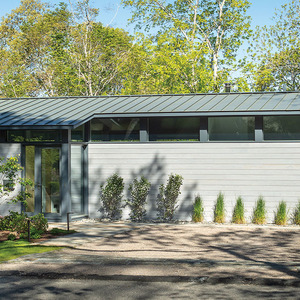













Replies
You can buy Fir T&G 2x6 around here. People use it for roof decking in post and beam/log/timberframe situations and it can be used as flooring that way too.
There are tons of CVG fir floors out west (I have it in my living room) and people are starting to use small diameter larch/fir to do circular sawn 3/4" T&G.
So yes, it will work. It definitely dents and scratches, though.
Doug Fir can make a beautiful floor if you use the "good stuff". Our first house in San Jose was built in the early 60's. When we bought it in '73, we had the carpet replaced and I was blown away when the old carpet and pad were removed revealing vertical grain fir flooring.
Alas, this was the era of green shag carpeting so it was immediately covered over again. :-(
Danno,
It sorta depends on the doug fir.. If it's old growth stuff it will make wonderfull flooring. True it's a mite soft and prone to scratching and denting.. as long as you go in understanding the nature of you'll be fine. Ff it's second growth or plantation grown the growth rings will tell.. jammed up close together it's old growth stuff wide say 1/4 inch or more apart it's too darn soft to make decent flooring..
As for milling, it's really not all that difficult to do. I've done a lot of it myself.
There are two ways to do it. If you have access to a shaper that's the easy way and a 8 foot long board will only take about a minute or so per side..
A router makes things harder.. the smartest way is to cut a groove in each side and slide a spline into the resulting groove.. .. Don't even think about doing it without the boards joined somehow..
Frenchy,
How do you nail the boards if they have no tongue. Are you saying face nail them if you use a spline and two grooves?
BTW after your constant harping about shellac, I used it on a cherry door in my NC place and it was as easy as you said and it turned out nice. Thanks for the tip.
You are supposed to put a smiley face after your second paragraph. (;-)
I thought you nailed through the spline just like it was the tongue on t&g.
Oh I know Frenchy takes a lot of heat, and I know he didn't invent shellac, but I did use it with good success. I figure he deserves some good props now and then so I wasn't being sarcastic. Sarcasm is easily missed and misunderstood on this and other forums so I don't use it.
What you read is what you get.
I'd like to hear from anyone who has used splines like he suggested and nailed the spline. Is it really a solid way to firmly nail done flooring?
When I needed to switch directions on my plank cherry I made splines (not near as thick as they are talking about the 2x8 stuff) I nailed through, I used the Port-a-nails t nails. No problems.
I was referring to the first part of your rag on him about going on or whatever. I knew you were being complimentary but some might have read it as a little harsh.
MGMaxwell,
I've used spines but I don't nail. Not with the wide boards I use.. you're thinking about traditional 2 1/2 inch flooring not 2x8's as the OP asked about..
I've used splines successfully on 2x12's that were face nailed as sub flooring. I wouldn't think that it would be a way to do traditional 2 1/2 inch flooring. IT would work but what would you gain?
When I used splines some of my boards were up to 12 inches wide and I didn't want to lose the 1/2 inch that splines take. But those were face screwed and plugged, you can see examples at 86666.13
MGMaxwell,
You could face nail if you wish! I can't stand it myself so what I do is screw and plug the boards. Time consuming but I like the look so I do it.. I'm pretty sure that edge nailing wouldn't be enough even if you had a tongue to nail off.. using structural wood you are nailing thru over 3/4 of an inch at the tongue compared to about 3/8ths of an inch with regular hardwood flooring..plus you are nailing a wide 8 inch board. edge nailing just won't cut it that wide.
One other solution if you have access from below, you can screw up thru the subfloor from below.
Edited 7/29/2007 5:59 pm ET by frenchy
I work in lots of old homes (1900-1915) that had original CVG fir flooring. The format was typically 1x4 T&G (although the older profiles were a tad thicker).
Although the fir can be a pretty color, etc., it really only made sense as a flooring material back in that time period because it was cheap and plentiful. Today, hardwoods are cheaper per square foot than fir, so the economic equation is entirely different.
More importantly, hardwoods wear much, much better than fir. I have some original fir floors in my 1910s house, and they were refinished several years ago. The fir is very susceptible to scratching and other surface damage, and can even get deep "bruises" that will literally never sand out.
I put in new Jatoba when I refloored the upstairs of my own house. It is a dream compared to the fir.
When advising my clients, I tell them the only time fir makes sense these days is when someone is trying to match the old work in an addition/expansion.
Unless your brother is getting the 2x8 fir virtually free, I can't imagine it would make any sense to use them. (Even then, I would personally still go with a hardwood).
I've seen some beautiful CVG fir floors recently, all 1x4 T&G. Making a floor out of 2x8 framing lumber seems like a lot of work, esp if it's a reno.
I'm renovating a 1910 Arts & Crafts bungalow with original Douglas fir flooring, which I have just had sanded. It has lasted well, but this will be the last sanding as the nail heads are beginning to show in places, meaning it's getting pretty thin.
To match it in an area that had lino before I put in new, vertical grain 3/4 x 2-1/4" Douglas fir and it looks fabulous. It makes for a very warm feeling.
Here's a local supplier that ships almost anywhere: http://westwindhardwood.com
I think flooring milled out of 2x8s is going to be a nightmare in terms of wood movement- even kd framing lumber is not that dry. Old growth cvg fir flooring is another story- it is on the soft side for floor, but it's stable, period appropriate, and beautiful. I have a lot of it in my own house. I'm glad it's in the bedrooms though, it wouldn't cut it in the kitchen.
zak
"When we build, let us think that we build forever. Let it not be for present delight nor for present use alone." --John Ruskin
"so it goes"
Thanks for the replies--I have forwarded them to my brother.
He hates laminate floors, says they look and even sound fake, so.... But I'm not exactly sure why he isn't considering oak (probably the cost). As far as hardness, I suppose people install cork flooring all the time and Doug fir is harder than cork! I tried to think of materials used for decks and suggested Ipe, but that is probably very expensive too. I installed a deck of cedar boards once and that was nice, but probably also expensive (I worked for someone else and never knew the cost of the cedar).
Danno,
I can buy white oak here for less than doug fir costs. It's cost is 80 cents per board foot. or $8.53 cents per 2x8 that's 8 1/2 feet long. Or you can buy soft maple or several other hardwoods for as little as 40 cents! that means each board is $4.26! I got a lot of my hardwood for flooring by buying surplus wood.. that's wood the sawmills send off to the pallet mills when the customer who ordered it didn't pick it up.. Cost on surplus wood varies. Ash sells for around 10 cents I bought black walnut for 17 cents when it wasn't popular, and there are plenty of other deals like that available. But try getting a 2x8 x 8 1/2 foot doug fir board for only $1.06
Now that's rough and green at the mill. It will air dry enough to lay quickly and that doesn't cost anything, just sticker it up and tie it down.
You can buy portable planers that will surface it wonderfully for a few hundred dollars. ($239.00 at Grizzly.com )
and when finished you still own the planner! a shaper is available for $315.00 at the same place. You own a floor and have tools, what a cool deal!
(anyway that's the justification I used as I bought all mine)
One more point.. KD on the stamp means that the board is kiln dried to 19% moisture plus or minus 2%
Some hardwoods come right out of the forest around that same moisture so neither are really ready to be laid as flooring.. both will require as much as a year of drying time before they will shrink enough to be laid.
By the way these prices are at the sawmill prices.. by the time wood gets to a lumberyard or building center there are as many as 9 differant people involved and each one adds his percentage and costs to the wood..
go to medium or small sawmills for these kinds of prices. If you'd like a list of small sawmills contact woodmiser.. they keep a list of their customers in your area, don't buy at the first sawmill, shop around.. they are cool places so one person might not have what you want but three others do and maybe someone has it as surplus!
(PS if it's been sitting around and is stained black or even silver that's a good thing, the first pass in the planner will remove all that and the wood underneath is going to be beautiful!)
If he'd like a really interesting floor have him buy Mill run. That's what I always do.. that's where all the wonderfull burls and swirls and charcter is. Sure, sometimes some boards are less than stellar, but buy an extra 15 % to cover that case. At a $1.06 per board you won't exactly go broke!
It drives me crazy everytime you mention how good your wood prices are from the mill! You are living big my friend. Living big.
Beer was created so carpenters wouldn't rule the world.
IDahoDon,
I've seen trees in Idaho ;-) I'm sure there have to be some farmers who have wood misers or other sawmills around. Contact them and find out who has wood and what they want for it.. Or you can do it backwards, find out who makes pallets locally and where their suppliers are..
Minnesota does have a few trees ;-) I'll be honest you need to find a sawmill who sells enough wood to sell it at market prices.. The prices I quote are pretty much right out of the hardwood market newsletter.
Hardwood isn't real common in the rocky mountain states and the wood that is cut seems to be bought up for prices outside of what's reasonable.
Beer was created so carpenters wouldn't rule the world.
But I'm not exactly sure why he isn't considering oak (probably the cost).
As I said in my last post, oak is going to be cheaper than fir if your'e comparing T&G flooring format.
Your brother's not seriously considering using framing lumber on a floor is he? I was running with the assumption that he was going to be using either a clear mixed grain (CMG) or CVG finish lumber grade of 2x8 fir.
Using framing lumber on a floor would most likely be a disaster. Framing lumber has lots of knots, is cut with the flat grain along the wide face, and is typically cut from fast-growing trees (very large growth rings). Framing lumber will be very unstable as a flooring material and is almost guaranteed to warp, twist, and cup.
Pardon my ignorance, but what does "CVG" mean? "Clear [something] grain," but can't think of what that something would be!
clear vertical grain, as in quarter sawn.
Thank you--should have known that! Vertical grain fir was very popular around here in the 50's-60's for trim and casings in high end houses, specially those doen by ALden Dow and architects like him.
I agree with you. 2x8 are going to be soft, flat grain, knotty and not true, as well as being way too thick, and not much cheaper than flooring. It would be a nightmare project.
Mill run framing lumber would definitely not be good for this. Not only soft and containing softer summerwood, but has many knots and pitch pockets.
I can get halfway decent clear vertical grain DF, mostly heartwood in 1x4 T&G that makes a decent looking stable fooor, but is still on the soft sode comapred to hardwoods, but harder than white pine or the SYP we also use sometimes.
Welcome to the
Taunton University of Knowledge FHB Campus at Breaktime.
where ...
Excellence is its own reward!
Piffin,
OH? Mill Runs isn't good stuff? All the wood in my pictures is millrun. Perhaps you need to go to 86666.1 and look at those pictures again..
I insist on Mill Run because as I said it's the wood with all the character and interesting grain patterns in it..
Only rarely do I accept FAS or similar graded wood.
Now I'll be honest, some sawmills sort out wood and call all the leftovers millrun but if you stand at the end of the mill and take what comes off the log and that's real proper millrun..
You took my comment about 80% out of context.I Was talking about mill run framing lumber DFir as opposed to CVG fir
Was NOT taling about your milled walnut plank flooring in any way
Welcome to the Taunton University of Knowledge FHB Campus at Breaktime. where ... Excellence is its own reward!
Piffin,
Fair enough! As I said I will admit that mill Run does seem to mean different thing to most sawmills..
Up in Northern Minnesota where a lot of framing lumber is grown they grade everything as it comes off the saw.. down in Southern Minnesota where hardwoods are much more common the sawmills tend to be smaller. A lot of them saw less than a million bd.ft. I've got a little over 1200 sawmills on my list but I'll bet I know of another 500 or so that aren't even listed. They tend to be run by farmers who trade their services for chickens or services for their cows with anothers bull.
Wisconsin seems to be similar and I've found hundreds of Iowa sawmills as well.
Northern Illinois seems to have a lot of medium to smaller sawmills operating as well.
I haven't spent a lot of time in Midstate Illinois or southern Illinois but from flying over it I suspect that it's loaded with plenty of sawmills as well.